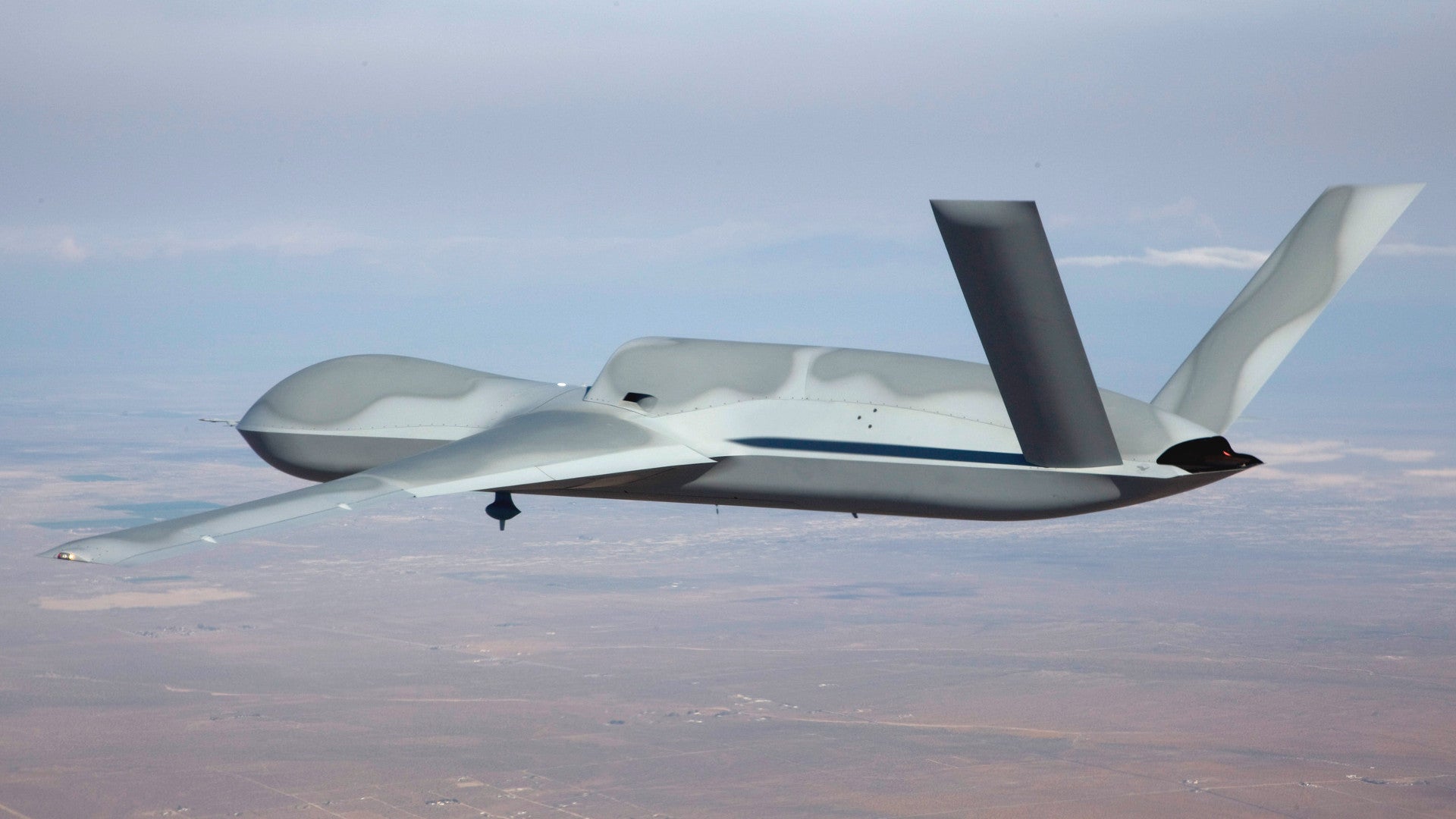More information has already been emerging
about the competitors in the U.S. Navy’s MQ-25 Stingray carrier-based drone program and now General Atomics has given an official, if vague statement about its up-coming proposal. Depending on what airframe the company ends up going with, reported sales of the Avenger design to the U.S. government and potential foreign deals for that aircraft could improve its chances, especially as the Navy continues to water down its own requirements.
David Alexander, president of aircraft systems for General Atomics Aeronautical Systems, Inc. (GA-ASI), disclosed the first details about its MQ-25 plans on Aug. 16, 2017. In addition to working on the Navy project and pitching Avenger to foreign militaries, GA-ASI is the firm responsible for the U.S. Air Force’s iconic MQ-1 Predator and MQ-9 Reaper unmanned aircraft, as well as the U.S. Army’s Warrior Alpha and MQ-1C Gray Eagle.
“We’ve been following this thing for seven years. I think we’ve got it down and we’ve got the right airplane.” Alexander said, according to USNI News. “Our design is optimized.”
He did not offer any additional details about how their design would meet the Navy’s needs, which are presently for an unmanned tanker, or confirm whether or not it would be based around the existing Avenger design. General Atomics has not released any MQ-25-specific concept art or other notional specifications.
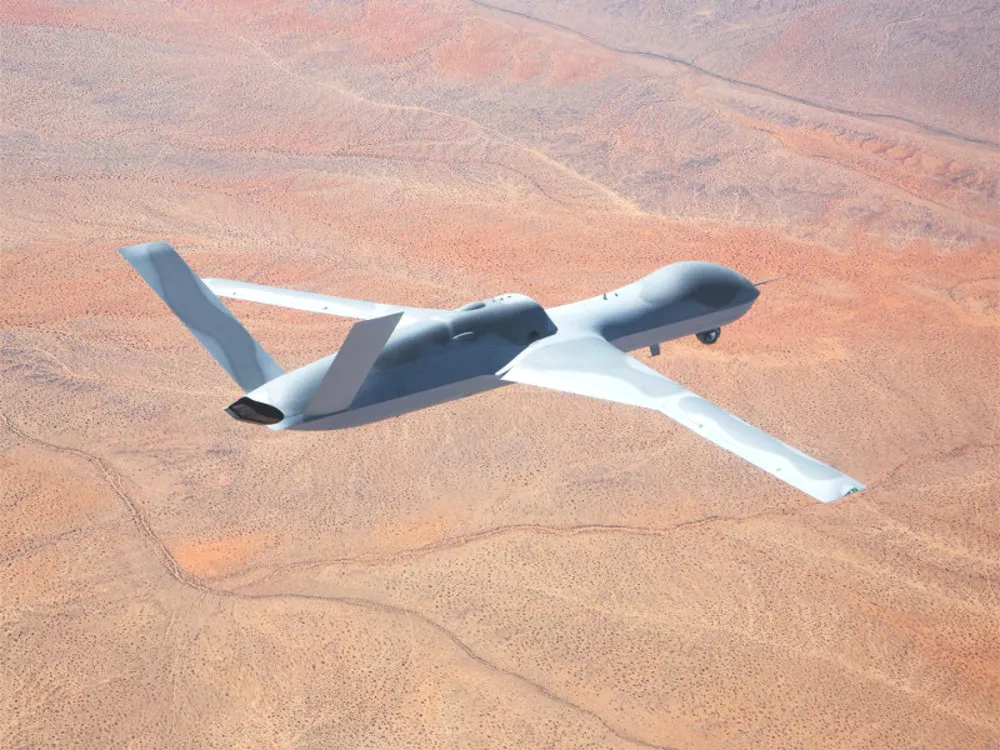
However, when Alexander says General Atomics has been keeping an eye on the Navy’s developments for seven years, he’s talking about when the company first pitched a version of the Avenger for what became known as the Unmanned Combat Air System Demonstrator (UCAS-D) program. The Navy’s initial plan with that carrier-based drone demonstration project to feed into the follow-on Unmanned Carrier-Launched Airborne Surveillance and Strike (UCLASS) project, which aimed to add a pilotless low-observable reconnaissance and strike aircraft to each carrier air wing.
The Navy chose Northrop Grumman’s X-47B for the UCAS-D, but did include GA-ASI and its navalized “Sea Avenger” in the early stages of UCLASS. When the service abandoned UCLASS for the much less ambitious Carrier-Based Aerial-Refueling System (CBARS) concept, the company continued as potential contender.
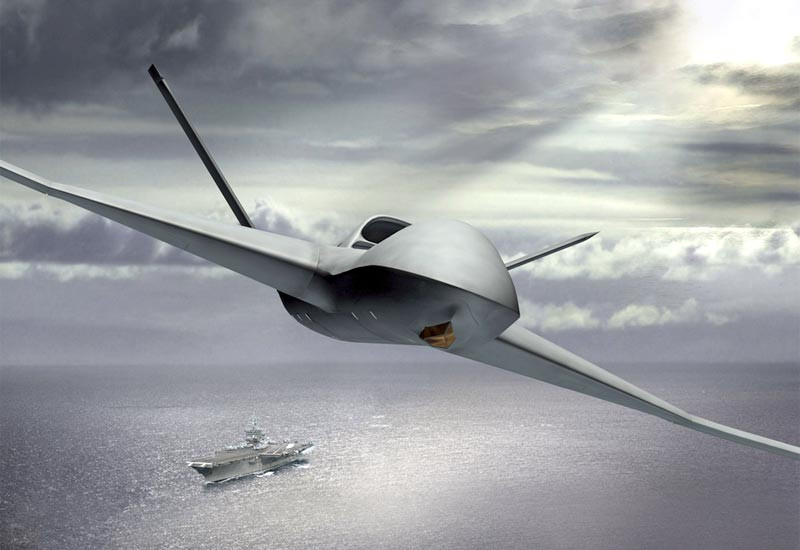
In the tanker role, the existing Sea Avenger or another derivative of the basic airframe could start with certain advantages over the existing UCLASS concepts from Boeing, Lockheed Martin, and Northrop Grumman, all of which are tail-less stealthy flying wing designs with internal payload storage only. The Avenger platform has both an internal payload bay and the ability to carry stores on six under wing pylons.
A theoretical load of five drop tanks and the Cobham buddy store refueling pod, which the Navy says each competitor must use in their proposal, plus additional fuel in the internal payload bay would give the aircraft a significantly larger fuel load over its rivals. Northrop Grumman just recently began testing flying an X-47B with a single drop tank under one wing and the buddy pod under the other.
The Avenger has also shown promise as a sensor truck if the Navy decides it is still interested in having limited intelligence, surveillance, and reconnaissance capabilities on the MQ-25. The design could readily accommodate a variety of electro-optical cameras, infrared systems, imaging radars, and signals intelligence packages in its internal payload bay. The ability to carry stores under the wings means it could end up carrying modular, reconfigurable sensor pods, as well. In June 2016, pictures emerged of one of the drones equipped with the MS-177 multispectral sensor system.
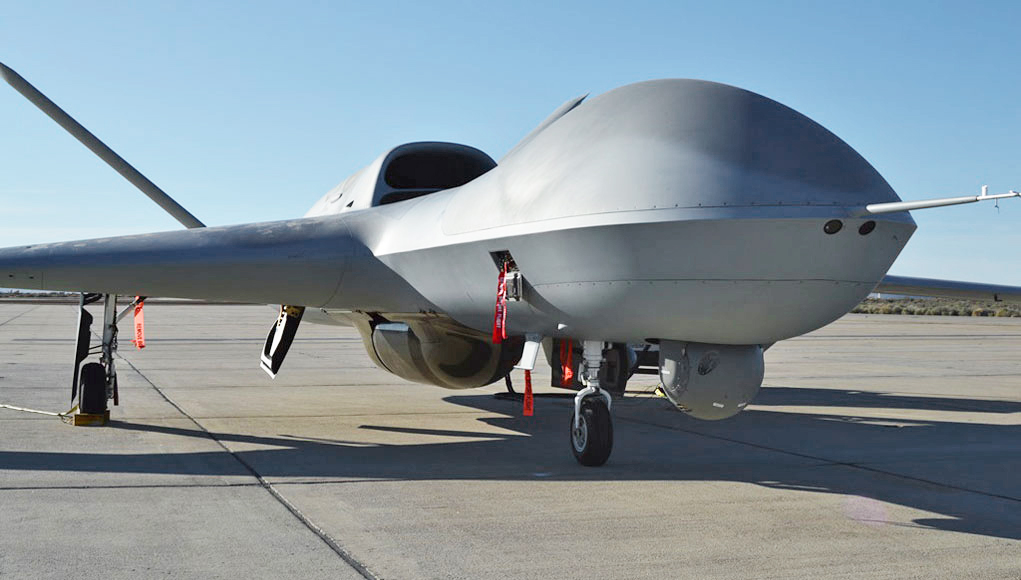
Despite all of these capabilities, the Avenger had been something of a dark horse in the UCLASS program, a no-frills design with a modest price tag that wasn’t necessarily the best suited to the projected deep-penetrating strike and surveillance missions in high risk environments. But the design and its lower cost could actually make it a prime contender since the Navy has already transformed its requirements for the MQ-25 so dramatically.
In March 2017, Rob Weiss, head of Lockheed Martin’s Skunk Works advanced projects office, suggested the changes might require all four competitors to completely overhaul their proposals. Avenger might actually require the least work to get it set up for the far less demanding tanking mission.
Back in 2014, The War Zone’s own Tyler Rogoway, then writing for Foxtrot Alpha, had already suggested this might happen, explaining:
General Atomics’ no-frills approach to the low observable, jet powered, unmanned combat air vehicle may actually help when it comes to the Navy’s looming Unmanned Carrier Airborne Surveillance and Strike (UCLASS) bid. This program is the Navy’s first attempt at integrating an operationally relevant advanced combat drone into its carriers’ air wings. Originally it was expected to require a deep penetrating, high subsonic, bat-winged, state of the art design, but now it seems more like its requirements were written based on the Avenger’s sales brochure, with a greater focus on cost, surveillance, endurance, rudimentary capabilities like acting as an aerial tanker, and reliability, than deep interdiction against an enemy with an advanced air defense network. Thus General Atomics’ “Sea Avenger,” an outgrowth design of the baseline Avenger airframe, which was the dark horse in the contest originally, may be poised to take the prize.
Even the Avenger’s physical form is low risk in nature, as it borrows the majority of its design attributes from the highly successful, but thirty five year old, “Tacit Blue” design. Yet if the Navy wants something that is by its very design low risk in nature, and more of a sensor and weapon truck than a super-fighter-like autonomous drone, then they have an option that also happens to possess the finest pedigree of any other unmanned systems manufacturer. That is not to say that the USAF, and possibly the CIA, are also not highly interested in the Avenger, which may have been a reason for its fading into the “gray world” over the last few years. Such occurrences often happen once a new technology like this lands a “customer.”
Additional customers for the Avenger design could only help drive its cost down even further, making it more attractive to the Navy. The drone has apparently already snagged at least one contract. In his August 2017 press call, GS-ASI’s Alexander said that an unspecified U.S. government agency was flying seven of the unmanned aircraft, though he couldn’t say anything more on the subject.
This number of planes is larger than one would expect from a flight test program and would imply there is an operational unit. When the US Air Force tested Avenger as part of its abortive MQ-X project, it acquired just a single example, even though it did send the aircraft to Afghanistan for field tests.

This would fit with an earlier statement that a GS-ASI vice president, Donald Cattell, made on Oct. 26, 2016, in which he revealed that an Avenger had performed a psychological warfare leaflet drop over Syria. As such, it seems mostly likely that this operator is either the U.S. military’s Joint Special Operations Command (JSOC) or the CIA, which would fit with earlier reporting. The War Zone has already written in detail about a number of secretive aircraft supporting JSOC and other coalition special operations and intelligence activities against ISIS in both Syria and Iraq. Another possibility is the Missile Defense Agency, although we probably would have heard about such a large acquisition.
On top of this U.S. government operator, GS-ASI’s Alexander said a foreign customer, whom he again couldn’t name, was interested in as many as 90 Avengers. The most likely prospective buyer would be the Indian Air Force, which reportedly inquired about purchasing as many as 100 of the aircraft, also known as Predator C, in 2016, according to Reuters.
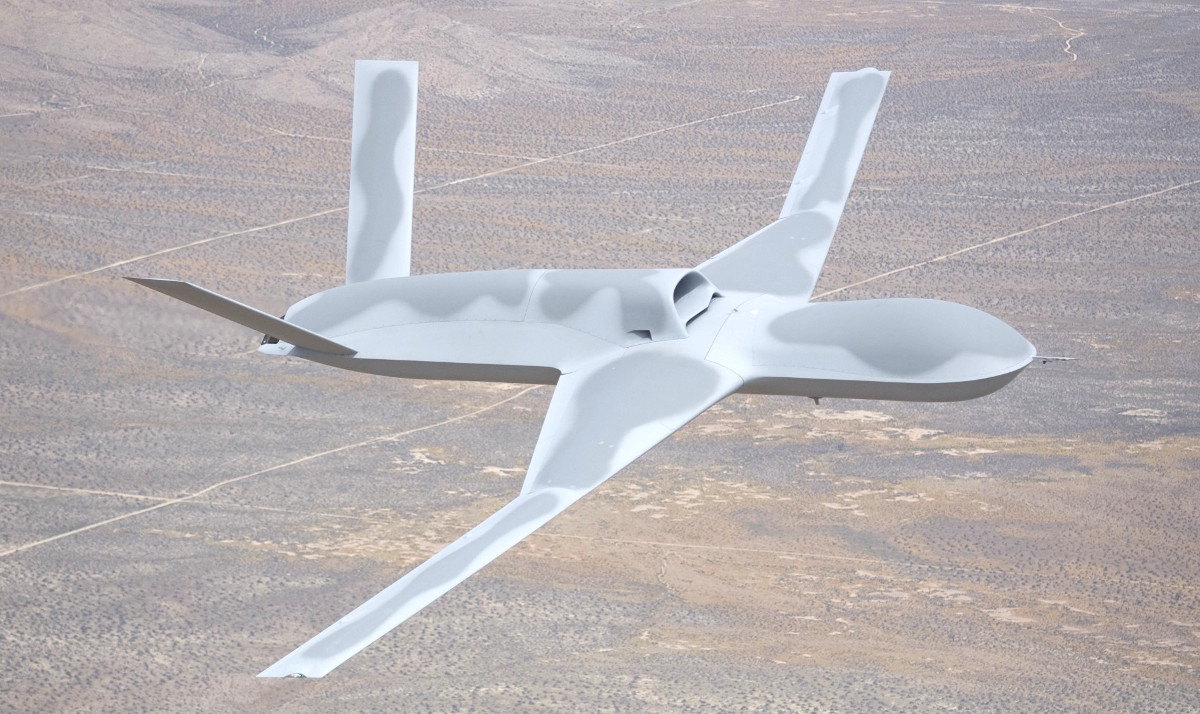
In June 2017, the U.S. State Department already approved the potential sale of more than 20 maritime surveillance drones from GS-ASI to the Indian Navy. These aircraft were a derivative of the Reaper known as the MQ-9B Guardian, which has a Raytheon SeaVue multi-mode radar mounted prominently under the fuselage.
Other countries could use a stealthy penetrating multi-role medium altitude, medium endurance drone like the Avenger. In particular Israel comes to mind. The Avenger could allow the IAF to field an asset that can be used for everything long-range surveillance to penetrating strike and electronic warfare missions. It could even be configured as a “loyal wingman” or a communications relay node. Still, we don’t know exactly who might be in active negotiations for the type.
Of course, the Navy’s MQ-25 program is still evolving and the requirements could easily change again before any of the competirors have a change to finalize their designs. But a capable, relatively affordable and adaptable existing design, such as Avenger, already in U.S. service and with a potentially strong foreign customer base, could be especially attractive no matter what the service ultimately decides it wants from the Stingrays.
Contact the author: joe@thedrive.com
